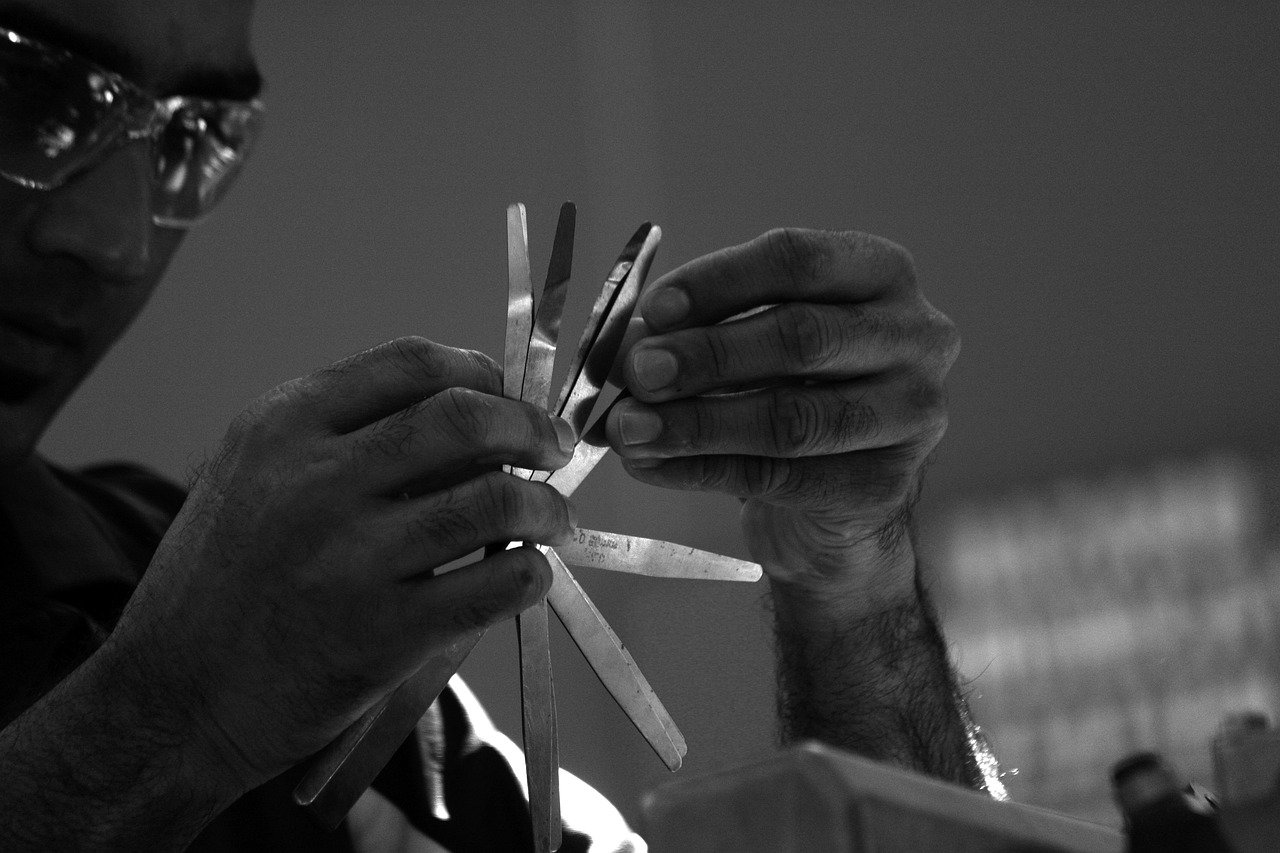In this article, we will explore how you can inspect your car’s electrical system and effectively check for any potential wiring issues. Having a thorough understanding of your car’s electrical system can help you identify and resolve any problems that may be affecting its performance. By following a few simple steps, you can ensure that your car’s wiring is in good condition, preventing any future issues and keeping your vehicle running smoothly. So, let’s dive into the world of car inspections and discover how you can become your own electrician for your beloved vehicle.
Inspecting the Car’s Electrical System
When it comes to maintaining your car, it’s essential to regularly inspect the electrical system to ensure everything is functioning correctly. The electrical system in your vehicle is responsible for powering everything from the headlights and radio to the engine itself. Neglecting to inspect and maintain this system can lead to various issues and potential breakdowns. In this article, we will guide you through the process of inspecting the car’s electrical system, covering everything from the battery to the wiring harness.
Checking the Battery
The battery is the heart of your car’s electrical system. Without a properly functioning battery, your vehicle won’t start, and none of the electrical components will work. To inspect the battery, start by visually examining its condition. Look for any signs of corrosion or damage to the terminals. If you notice corrosion, gently clean it using a mixture of baking soda and water. After cleaning, make sure the connections are tight and secure. Additionally, you can use a multimeter to test the battery’s voltage. A healthy battery should have a voltage reading between 12.4 and 12.7 volts.
Inspecting the Alternator
The alternator is responsible for recharging the battery while the engine is running. A malfunctioning alternator can lead to a drained battery and electrical issues. To inspect the alternator, start by visually examining its condition. Look for any signs of damage or loose connections. Next, you can test the alternator’s functionality by using a multimeter. With the engine running, connect the multimeter to the battery terminals. A properly functioning alternator should provide a voltage reading between 13.5 and 14.5 volts.
Examining the Starter Motor
The starter motor is what gets your car’s engine running. If the starter motor fails, your vehicle won’t start at all. To inspect the starter motor, start by visually examining it for any signs of damage or corrosion. Check the connections and make sure they are tight and secure. Next, you can use a voltmeter to test the power supply to the starter motor. If there is voltage reaching the motor but it still fails to start the engine, it might be time to replace the starter motor.
Testing the Ignition System
The ignition system is responsible for starting the engine and keeping it running. If the ignition system is malfunctioning, your car may experience difficulty starting or even stall while driving. To test the ignition system, start by inspecting the spark plugs. Remove them one by one and check for signs of wear or fouling. Additionally, you can use a spark tester to check for a spark when the engine is cranked. If there is no spark, it may indicate a faulty ignition coil or control module that requires replacement.
Checking the Fuse Box
The fuse box is where the electrical fuses for your car are housed. These fuses protect various electrical components from electrical overload and can prevent damage to the wiring system. To inspect the fuse box, start by locating it, usually found under the dashboard or in the engine compartment. Check each fuse for any signs of damage, such as a blown fuse or melted appearance. If you find a blown fuse, replace it with the appropriate amp rating to ensure proper electrical protection.
Inspecting the Wiring Harness
The wiring harness in your vehicle is a network of electrical wires that connects various components to the battery and electrical system. Over time, the wiring harness can become damaged or worn, leading to electrical issues. To inspect the wiring harness, start by visually examining it for any visible damage, such as exposed wires or fraying insulation. Pay particular attention to areas where the wiring may be subjected to heat or movement, such as near the engine or suspension components. If you notice any damage, it’s important to repair or replace the affected section of the wiring harness.

This image is property of pixabay.com.
Checking for Wiring Issues
Now that we have inspected the key components of the car’s electrical system, it’s time to focus on checking for potential wiring issues. These issues can include loose or damaged wires, poor electrical connections, grounding wire problems, and corrosion.
Examining the Wiring Condition
The overall condition of the wiring plays a crucial role in the proper functioning of the electrical system. Over time, wiring can deteriorate due to exposure to heat, chemicals, or physical damage. To examine the wiring condition, start by visually inspecting the entire wiring system. Look for any signs of wear, frayed wires, or cracked insulation. Pay attention to areas where the wiring may come into contact with sharp edges or moving parts. If you encounter any damaged wiring, it’s important to replace it to prevent potential electrical issues.
Checking for Loose or Damaged Wires
Loose or damaged wires can disrupt the flow of electricity and cause various electrical problems in your car. To check for loose or damaged wires, start by gently wiggling the wiring harness and connections. If you notice any movement or play, it indicates loose connections that need to be tightened. Additionally, inspect the wires themselves for any signs of damage, such as cuts, abrasions, or exposed metal. If you find any damaged wires, it’s crucial to repair or replace them to ensure a reliable electrical system.
Testing Electrical Connections
Proper electrical connections are vital for the smooth functioning of your car’s electrical system. Loose or corroded connections can cause intermittent electrical issues or even complete failure of certain components. To test electrical connections, start by visually inspecting them for any signs of corrosion or looseness. Corrosion can be cleaned using a wire brush and a cleaning solution. Additionally, you can use a multimeter to test the continuity of the connection. A solid connection should have minimal resistance, indicating good electrical continuity.
Inspecting Grounding Wires
Grounding wires provide a return path for electrical current and play an important role in the electrical system. Faulty grounding wires can lead to electrical malfunctions and even damage to other components. To inspect grounding wires, start by locating them in your car. They are typically connected to the vehicle’s chassis or engine block. Check the connections for any signs of corrosion or looseness. Clean the connections if necessary and ensure they are tight. A good grounding connection will ensure the proper functioning of the electrical system.
Identifying Corrosion
Corrosion is a common issue in electrical systems, especially in areas exposed to moisture or harsh conditions. It can impede the flow of electricity and cause various electrical problems. To identify corrosion, visually inspect the electrical connections and terminals for any signs of a whitish or greenish substance. Corroded connections can be cleaned using a mixture of baking soda and water or a commercial electrical contact cleaner. Regularly cleaning and maintaining the connections can prevent corrosion-related electrical issues.
Using a Multimeter to Test Wiring
A multimeter is a valuable tool for diagnosing and testing electrical issues in your car’s wiring system. It allows you to measure voltage, resistance, and continuity, providing valuable information about the condition of the wiring. To use a multimeter, start by setting it to the appropriate function, such as voltage or resistance measurement. Then, follow the manufacturer’s instructions to test specific wires or connections. A multimeter can help you identify issues such as open circuits, short circuits, or high resistance, allowing for targeted repairs or replacements.
By regularly inspecting the car’s electrical system and checking for wiring issues, you can ensure a reliable and safe vehicle. Remember to follow proper safety measures, such as disconnecting the battery and wearing appropriate protective gear, while inspecting or repairing the electrical system. If you encounter any complex electrical issues or are unsure about any aspect of the inspection process, it’s always recommended to consult a professional mechanic or auto electrician for assistance.

This image is property of pixabay.com.

